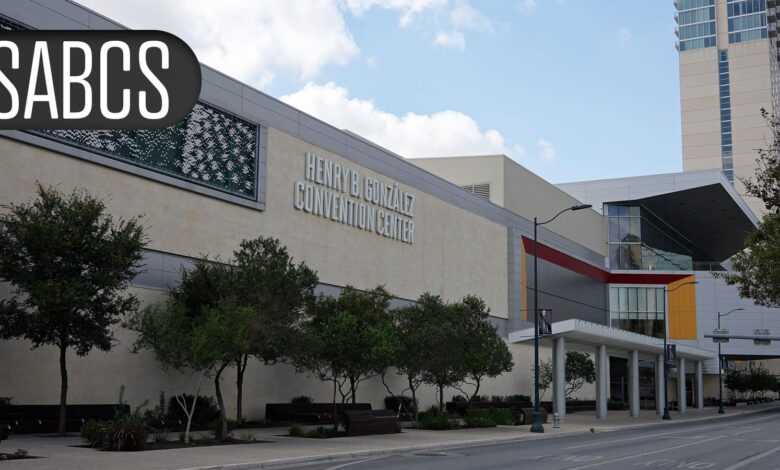Mixed Signals From Trials of Perioperative, Neoadjuvant Immunotherapy for Early TNBC

—
Adding atezolizumab, camrelizumab to chemotherapy improves pCR but not survival endpoints
by
Charles Bankhead, Senior Editor, MedPage Today
December 15, 2024
SAN ANTONIO — Two trials of neoadjuvant immunotherapy for triple-negative breast cancer (TNBC) produced mixed efficacy signals.
The NSABP B-59/GBG-96-GeparDouze trial showed that adding perioperative atezolizumab (Tecentriq) to neoadjuvant chemotherapy failed to improve event-free survival (EFS) despite a significant improvement in pathologic complete response (pCR). The China-based CamRelief trial also showed a significant improvement in pCR with the addition of camrelizumab, but no advantage for any of the secondary survival-associated endpoints was assessed.
The results, reported at the San Antonio Breast Cancer Symposium (SABCS), added to the history of mixed messages from trials of neoadjuvant immunotherapy for TNBC, according to invited discussant Giampaolo Bianchini, MD, PhD, of San Raffaele University in Milan.
The KEYNOTE-522 trial established perioperative pembrolizumab (Keytruda) plus neoadjuvant chemotherapy as the standard of care for intermediate/high-risk TNBC. Long-term follow-up showed a survival advantage with perioperative versus neoadjuvant chemotherapy. Trials of neoadjuvant immunotherapy generally have shown numerical improvement in pCR versus chemotherapy alone, but not all of the differences achieved statistical significance. To date, none of the trials have shown improvement in a survival endpoint.
“I would like to remind all of us that we don’t have any evidence that pCR is a surrogate for long-term benefit at the trial level,” said Bianchini.
He also offered a reminder that a trial’s failure to reject the null hypothesis does not mean that the null hypothesis is true and an intervention has no effect.
“The correct interpretation is that the observed differences could still be explained by chance, and the results simply do not support a conclusion that there is a difference between the groups under the study’s design, sample size, and population included,” said Bianchini.
Differences in patient and tumor characteristics, trial design, and possibly between drugs could have contributed to the failure to show improvement in a survival endpoint, he suggested.
NSABP-59
The NSABP B-59 trial evaluated perioperative atezolizumab or placebo added to neoadjuvant chemotherapy for stage II-III TNBC. Previously, adding atezolizumab to neoadjuvant chemotherapy improved pCR in the IMpassion031 trial and improved progression-free survival in metastatic TNBC when added to chemotherapy in the IMpassion130 trial, noted Charles E. Geyer Jr., MD, of the UPMC Hillman Cancer Center in Pittsburgh.
Investigators in the multinational trial randomized 1,550 patients, 1,248 of whom were evaluable for data analysis. The primary endpoint was EFS, and pCR was a key secondary endpoint. The study population had a median age of 49, and about 60% of the patients had node-negative disease, 60% had tumors ≤3 cm, and 36% had PD-L1-positive tumors. About 80% of patients had grade 1 tumors, and about 53% had BRCA wild-type cancers.
After a median follow-up of 46.9 months, the primary analysis showed a 4-year EFS of 85.2% in the atezolizumab arm and 81.9% in the placebo arm, representing a 20% reduction in the hazard ratio (95% CI 0.62-1.03, P=0.08). A subgroup analysis suggested an EFS benefit in node-negative disease (P=0.039), but in no other groups.
The pCR rate came in at 57.0% for chemotherapy/placebo and 63.3% for chemotherapy/atezolizumab (P=0.0091). An analysis of EFS by pCR status showed similar EFS between treatment arms regardless of whether patients attained pCR.
The 4-year overall survival was about 90% in both treatment groups. Grade 3/4 treatment-emergent adverse events (TEAEs) occurred in a similar proportion of patients in each group, although twice as many patients in the placebo arm discontinued because of TEAEs (21.2% vs 10.6%).
“While not meeting efficacy criteria for the primary endpoint, the results support translational studies for potential biomarkers to identify subsets of patients who may benefit from the addition of checkpoint inhibitors to neoadjuvant or adjuvant therapy in TNBC,” said Geyer.
CamRelief
The CamRelief trial involved 441 patients with stage II-III TNBC. Patients with node-positive disease were eligible but not patients with distant metastases, said Zhi-Ming Shao, MD, of Fudan University and Shanghai Cancer Center. Findings were published simultaneously in JAMA.
All patients received nab-paclitaxel plus carboplatin followed by epirubicin-cyclophosphamide chemotherapy and were randomized to the PD-1 inhibitor camrelizumab or placebo. Following surgery, patients continued treatment with adjuvant camrelizumab or placebo. The primary endpoint was pCR, while EFS, disease-free survival (DFS), and distant disease-free survival (DDFS) were secondary endpoints.
Like NSABP B-59, the CamRelief patient population had a median age of 49, but unlike NSABP B-59, 57-58% of patients had a PD-L1 combined positive score (CPS) ≥10, and only 13-14% had a PD-L1 CPS <1. Three-fourths of the tumors were T2, and about 30% of patients were node negative.
The primary analysis showed a pCR rate of 56.8% with camrelizumab and 44.7% with placebo (P=0.0038). Separate analyses of patients with high-risk disease showed similar advantages for camrelizumab: pCR rates of 49.4% versus 38.0% in patients with stage III disease and 57.8% versus 42.7% for node-positive disease. The advantage for camrelizumab was consistent across prespecified subgroups.
Analyses of secondary endpoints showed no significant improvement in EFS, DFS, or DDFS, although camrelizumab treatment was associated with hazard ratios of 0.62 to 0.80.
Grade ≥3 AEs occurred more often with camrelizumab (89.2% vs 83.1%), and more patients in the camrelizumab arm discontinued treatment because of AEs (18.5% vs 5.9%), including a 9.9% discontinuation rate attributable to the PD-1 inhibitor. Immune-related AEs occurred in 92.3% of patients in the camrelizumab arm, reaching grade ≥3 severity in 9.5%.
“Our data support camrelizumab plus chemotherapy as a potential new neoadjuvant therapeutic option for treating early or locally advanced triple-negative breast cancer,” said Shao.
-
![author['full_name']](https://clf1.medpagetoday.com/media/images/author/charlesBankhead_188.jpg)
Charles Bankhead is senior editor for oncology and also covers urology, dermatology, and ophthalmology. He joined MedPage Today in 2007. Follow
Disclosures
NSABP B-59/GBG-96-GeparDouze was supported by the National Adjuvant Surgical Breast and Bowel Project and the German Breast Group, with support from Roche/Genentech.
Geyer disclosed relationships with Genentech/Roche, Daiichi/Sankyo, AstraZeneca, and Exact Sciences.
CamRelief was supported by Jiangsu HengRui Medicine. Some co-authors are company employees.
Shao disclosed no relevant relationships with industry.
Bianchini disclosed relationships with Roche, Merck Sharp & Dohme, Seagen, AstraZeneca, Daiichi-Sankyo, Novartis, Gilead, Helsinn, Eli Lilly, Eisai, Menarini/Stemline, Exact Sciences, and Takeda.
Primary Source
San Antonio Breast Cancer Symposium
Source Reference: Geyer CE, et al “NSABP B-59/GBG-96-GeparDouze. A randomized double-blind phase III clinical trial of neoadjuvant chemotherapy with atezolizumab or placebo followed by adjuvant atezolizumab or placebo in patients with stage II and III triple-negative breast cancer” SABCS 2024;Abstract GS3-05.
Secondary Source
San Antonio Breast Cancer Symposium
Source Reference: Shao ZM, et al “Neoadjuvant camrelizumab plus chemotherapy for early or locally advanced triple-negative breast cancer (CamRelief): A randomized double-blind, phase III trial” SABCS 2024;Abstract GS3-06.
Additional Source
JAMA
Source Reference: Chen L, et al “Camrelizumab vs placebo in combination with chemotherapy as neoadjuvant treatment in patients with early or locally advanced triple-negative breast cancer” JAMA 2024; DOI: 10.1001/JAMA.24.235760.



